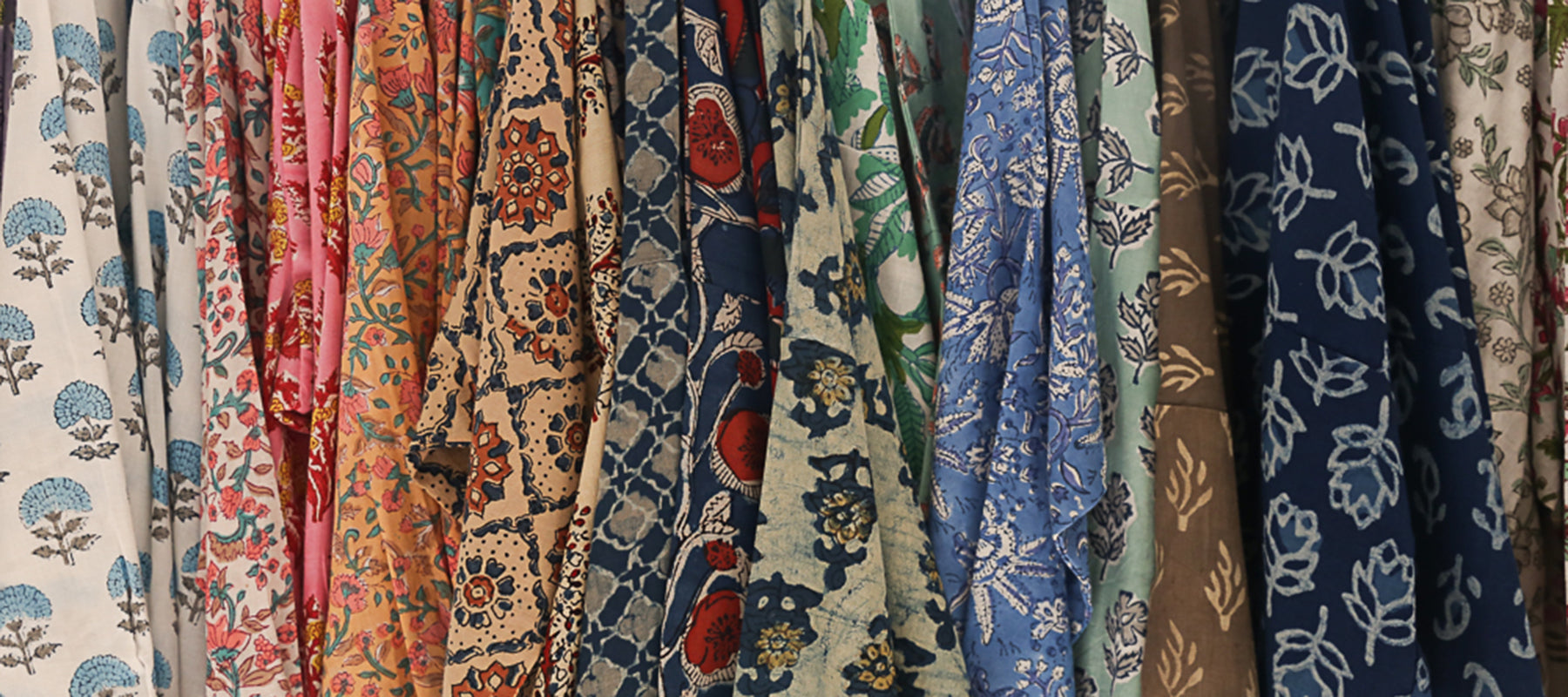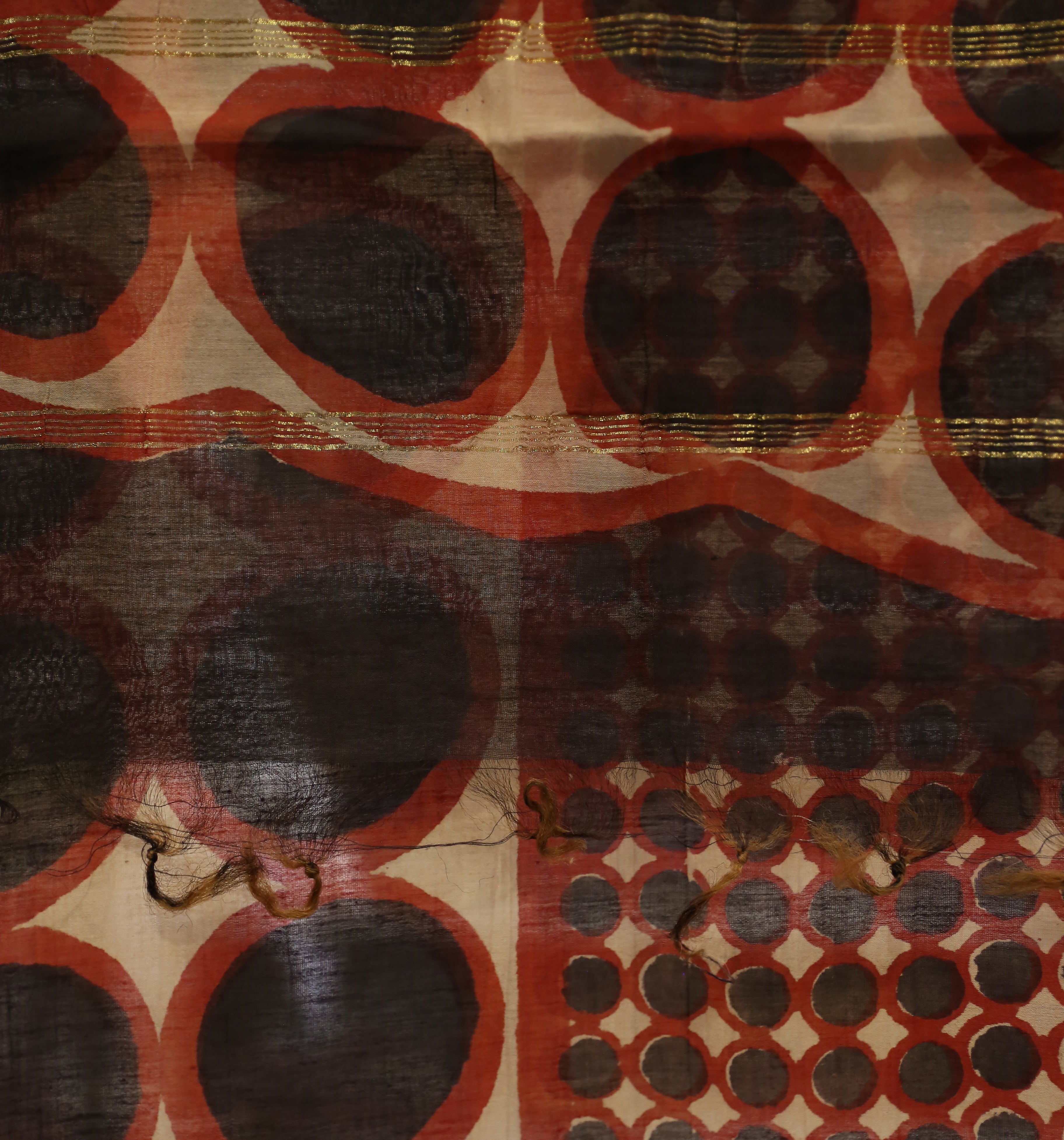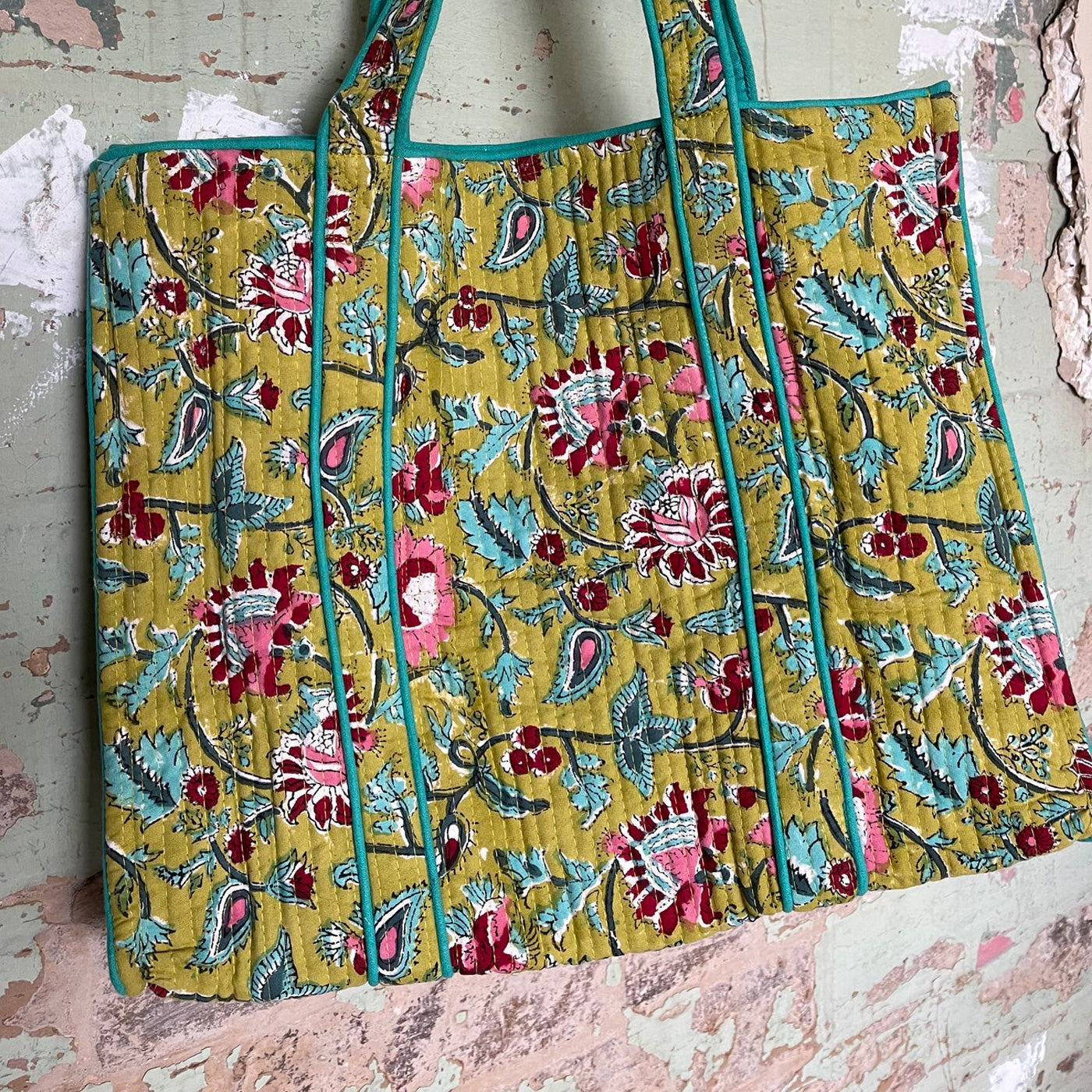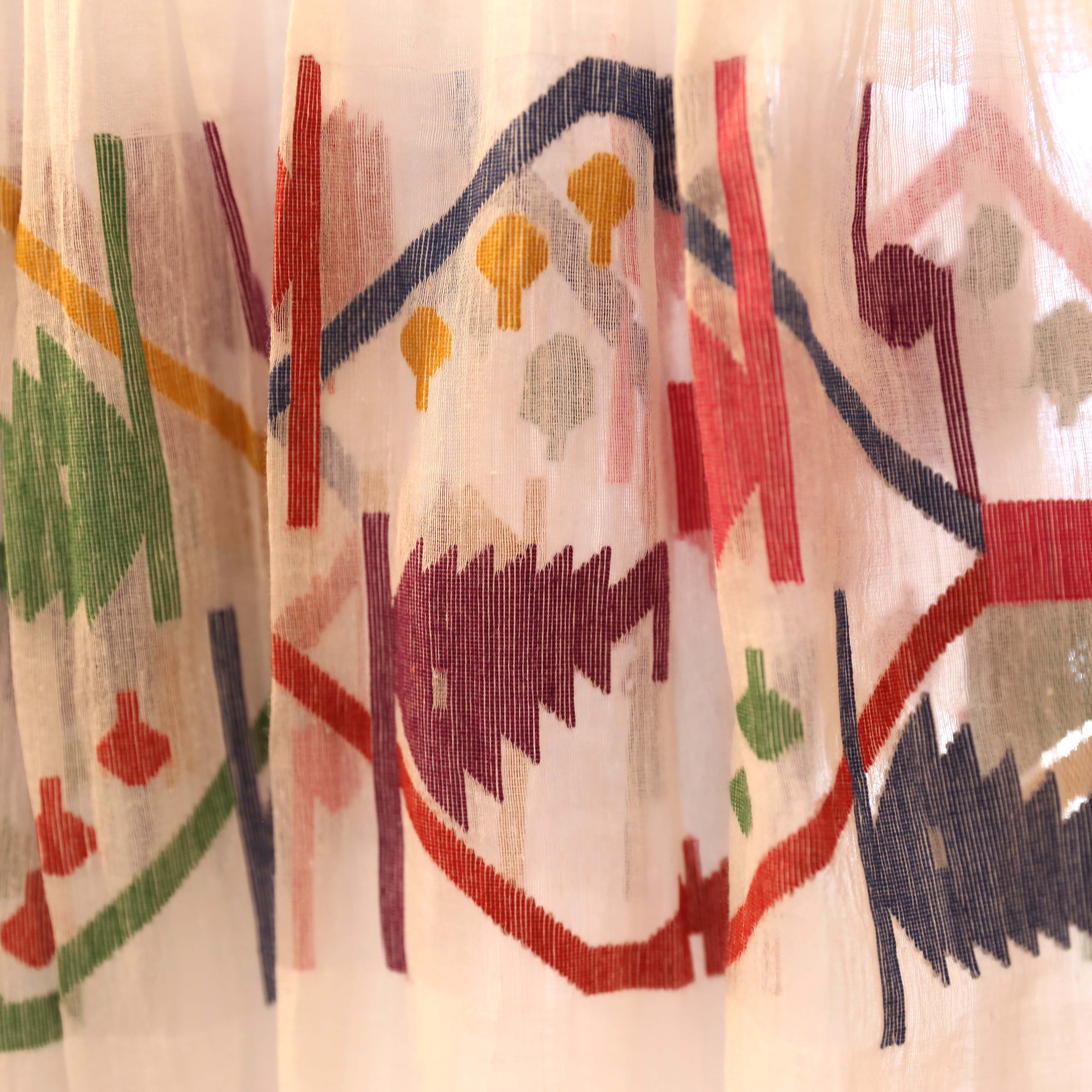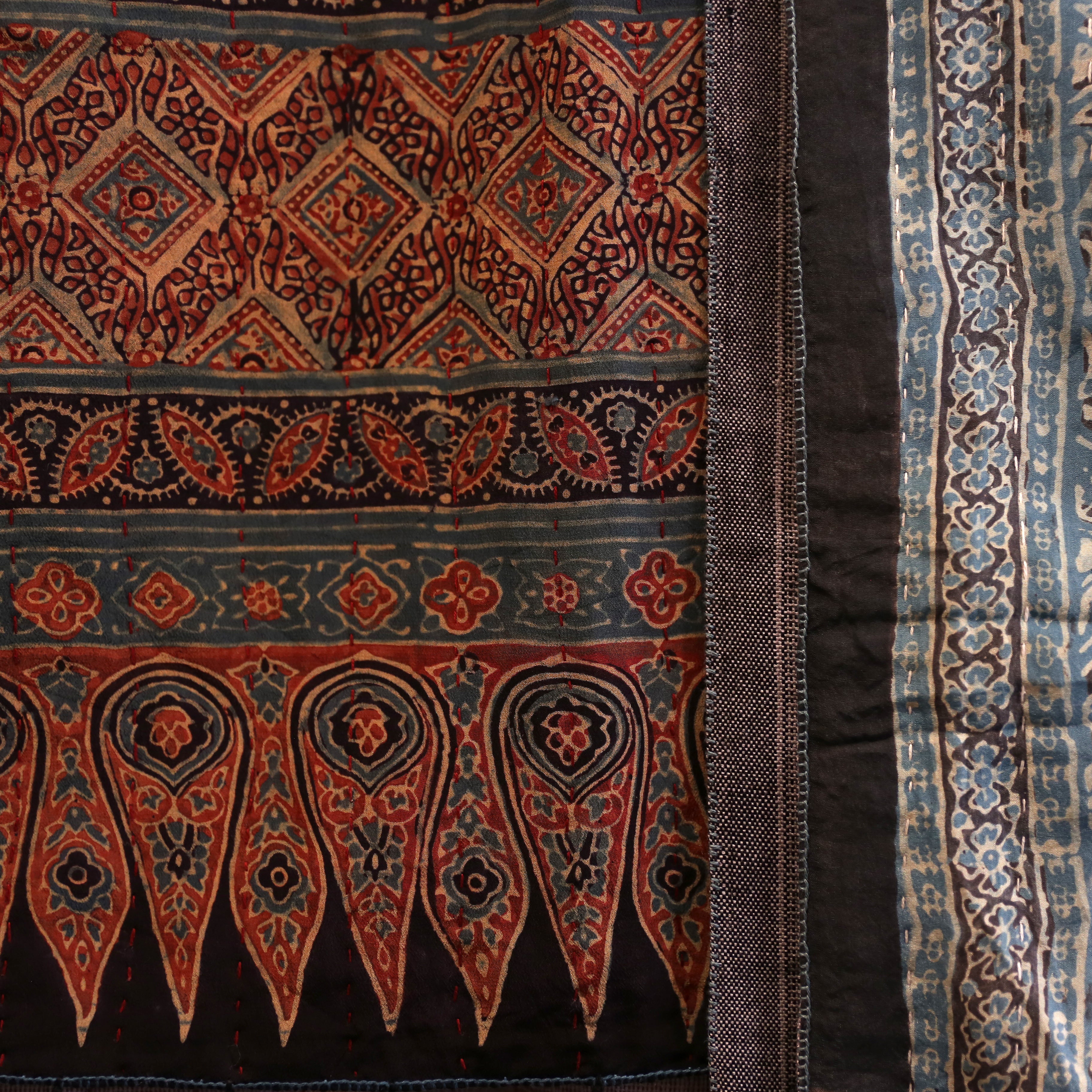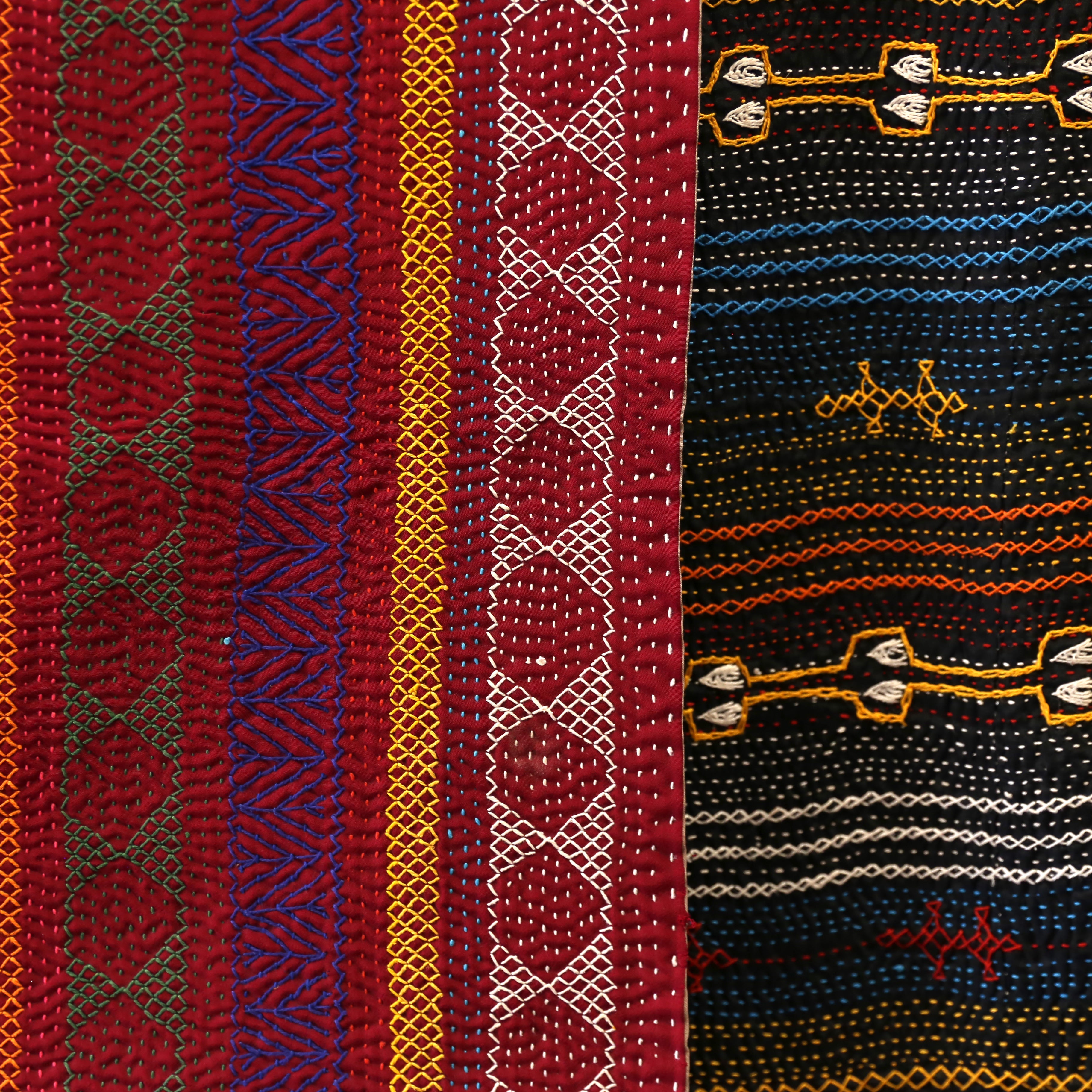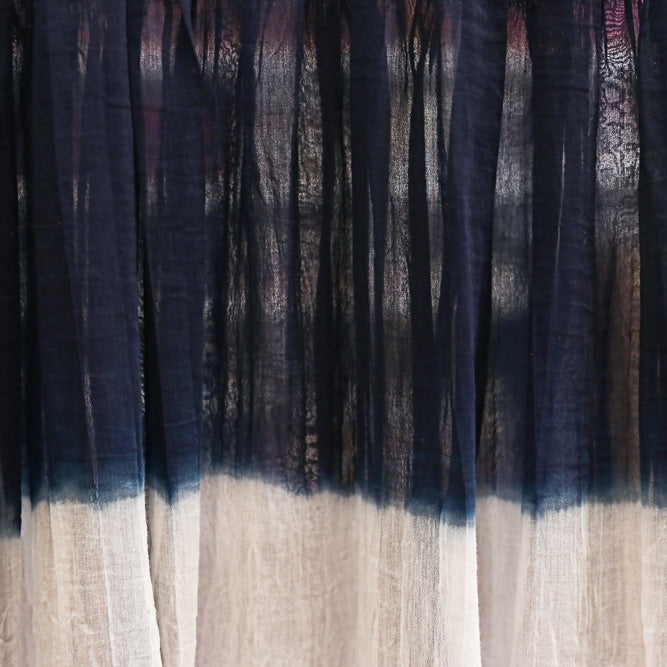Printed ⋮ Handblock Printing
HISTORICAL BACKGROUND
Indias reputation for exquisite painted and printed cotton is longstanding. Indian printers knowledge of resists and mordants - printed using engraved wooden blocks, brushed and even smeared on to cloth using a rag - enabled the production of multi-coloured, colourfast textiles that were unmatched by the rest of the world until the Industrial Revolution.
This skill, transmitted from one generation to the next, was matched by their ability to calibrate production to suit the tastes of a clientele that included a highly segmented domestic market (they supplied the courts and temples, also different castes, faiths and occupations), as well as an expansive export market.
The export of painted and printed textiles from India has been documented as far back as the 5th century. They were among the most important commodities traded along the maritime routes of the Indian Ocean, from Egypt and the Arab World, to Southeast Asia, China and Japan. They played a crucial role in the spice trade and were bartered for cloves, nutmeg and mace from the `Spice Islands’ of eastern Indonesia and pepper from Sumatra and Java.
THE INDUSTRIAL REVOLUTION
It was not until the Industrial revolution the mid-19th century, that the newly invented power looms and mechanical printing began to jeopardies India’s handmade textile industry.
With the political and social turbulence that led to Independence in 1947, this situation only worsened. Customers vanished. The loss of the patronage system prior to Independence in 1947 was devastating and ruptured the ancient mercantile and social dynamic of the industry.
THE 1960’s
The arrival of young western hippies seeking the ‘true Indian experience’ resulted in a block printing renaissance during the 1960’s. Wih an eye for anything new and exotic, these young entrepreneurs revitalised block printing by updating the palette and introducing new silhouettes. Soon block printed fabric was the rage, sweeping the west. A tradition was reinvigorated.
Of course the remarkable adaptability and resilience of the Indian artisan cannot be underestimated.Their willingness to adjust their methods and experiment was key to the survival of the craft.
NOW
BY the late 1970’s Indian companies began to hire freelance designers to create contemporary print collections. Unencumbered by the rigid demands of traditional motifs, these designers broke from the past and drew inspiration from the vitality fo their surroundings. With fresh colour ways and a new spectrum of designs, these textiles had market appeal and influenced global fashion.
Surviving a series of highs and lows, the textile industry once again flourishes. Young Indian designers, equipped with a global perspective, are familiar with the local idiom.
Dedicated to emerging international style with local craft traditions their fashions are reverberating around the word and drawing international acclaim.
References
Block Printed Textiles of India. Eiluned Edwards
Anokhi Hand Blockopedia

